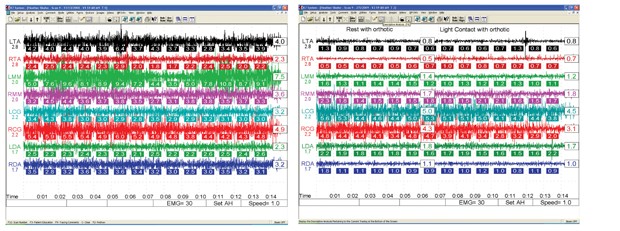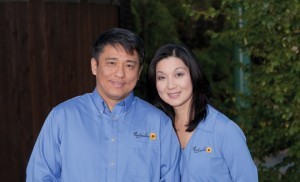TMD – The Great Impostor
A Case Study of TMD (Temporomandibular Joint Dysfunction) Disguised as Various Medical Conditions
By Dr. Grace Liu and Dr. Lewis Yu
Jaw pain is the most common symptom people associate with TMD. However, it is not the only one. Due to the joint’s close proximity to the brain and pathological mechanism, it induces a wide range of symptoms throughout the entire body. When these symptoms surface at locations other than the jaw joints, they tend to mimic other medical conditions that may share some common pathways. Because of this sharing of common pathways, the true etiology is often masked. These symptoms may be reduced to a tolerable state, but they will always return without treating the true cause of the problem.
To appreciate the uniqueness of TMD, we need to have a basic understand of the anatomy. Our human skull made of several bone plates stitched together by sutures. This flexible design allows our head to absorb blunt force without damaging the brain. TMJ sits under the Temporal bone. Within and around this particular bone, there are several major nerves and muscles passing through. These nerves control a wide range of functions such as facial expression, hearing, swallowing processes and other involuntary muscle movements.
As we open and close our mouth, TMJ normally just glides over temporal bone with the help of several major muscles. In a pathological situation, these muscles are often in spasm. The direct consequence is bracing of TMJ against the temporal bone. Compression of temporal bone would in turn compress the nerves nearby. A group of symptoms is the direct consequence of such compression. Below is a partial list of symptoms:
- Headaches
- Ear Congestion
- Vertigo (Dizziness)
- Tinnitus (Ringing in Ears)
- Dysphasia (Difficulty Swallowing)
- Facial Pain
- Paresthesia of fingertips
- Thermal Sensitivity (Hot & Cold)
- Trigeminal Neuralgia
- Bells Palsy
- Nervousness/Insomnia
- Cervical Pain
Individually, each of these symptoms listed in the above table does not show a clear connection to TMD. Patients present these symptoms to their medical doctors. Based on their medical training, the doctors see and treat these symptoms differently. The result is partial improvement at best since the true cause of the problem has not yet been addressed. As time goes by, the side effects produced by chronic use of medication may further mask the true origin of the problem or create other health issues. Although non- life threatening, quality of life would suffer from this chronic condition.
CASE REPORT
Heather is a young lady who came to our office for consultation regarding her chronic headaches. She had many headache episodes each week. The pain mostly comes from the left side of her face and around the eyes. In addition to chronic headaches, she also has hypothyroid condition. Her medical doctor diagnosed her headache as vestibular migraine. Medication given has proven successful in reducing the numbers of episodes.
Clinically, Heather has sore chewing muscles. Her TMJ clicks and is sometimes painful. She admits to clenching. There is no other significant issue with her dentition and supporting tissue. Based on the size her upper front teeth, we estimated her teeth are over closed by 5 mm. This is a significant number in dental terms. Analysis of her major chewing muscles by scanning muscle fiber firing frequency shows a significant spasm. Notice the first four lines of the graph below. The left side of each line has three letters designated and a number. That number represents what normal muscle should read. One the right side of each line, the number listed is the actual reading.
Before Treatment
Impression:
By definition, vestibular migraine is a kind of migraine that is preceded by vertigo (dizziness). Other symptoms may include: nausea, fainting, abnormal eye movement, hearing loss, weakness in arms and legs. The cause of the vestibular migraine is unclear. However, it is generally believed to be a neurological abnormality in the back of the brain. There are no drugs to treat vestibular migraine specifically. Patients are given drugs to treat vertigo and migraine separately. The most common age group is late teens /early 20’s.
Heather certainly fits the profile of a vestibular migraine patient; however, the clinical picture changes once we add the TMJ clicking, over closing, clenching, and muscle spasm. The list of vestibular migraine symptoms is very similar to TMD symptoms. Over closing by 5mm could certainly compress the nerves to produce the symptoms. The question becomes which is the real etiology? Is it a neurological abnormality or TMD?
3 months later
Treatment:
We treated Heather based on the assumption of TMD. Using neuromuscular techniques, we constructed an oral appliance for her. The goal of this appliance is to decompress TMJ and relax the chewing muscles. Three months after she began to wear the orthotic, we took another look at her muscle spasms.
Compare the first four lines to the pre-op graphs. We see a dramatic improvement even with in three months. Although there are other muscles with spasms that have not been resolved, this early result is still very remarkable. Subjectively, Heather is reporting fewer episodes of headaches and her sense of general well being is improving.
This case is far from over. There are still issues that we may or may not be able to solve by TMD treatment alone. Ultimately, we suspect it would take the combined efforts of both the medical and dental teams to resolve Heather’s issues. This case does demonstrate how a fresh perspective to a problem could produce great results.
Dr. Lewis Yu earned his dental degree from the University of Pennsylvania School of Dentistry in 1996. He received two years of advanced post-graduate oral surgery training in both the New York City Hospital System and the Hospital of the University of Pennsylvania. He continued his education through extensive hands-on training at the prestigious Las Vegas Institute for Advanced Studies and the Pankey Institute. The Las Vegas Institute has provided Dr. Yu with advanced training in Neuromuscular Dentistry and Comprehensive Aesthetic Restorations. He had practiced in Philadelphia and Newark, DE before joining All About Smiles, P.A. He is a member of the Delaware State Dental Society, American Dental Association, and the Academy of General Dentistry.
Dr. Grace Liu has been practicing dentistry since 1996, having earned her degree from the New York University School of Dentistry. She continued her education through post-graduate studies at Columbia University, the Las Vegas Institute for Advanced Studies in Nevada and the Academy of Dentistry. She is also a member of the Delaware State Dental Society, American Dental Association, and the Academy of General Dentistry.




